Detailed Information Guide about Ladies Finger Farming:
Today, we discuss the topic of Bhendi or Ladies finger farming techniques and practices.
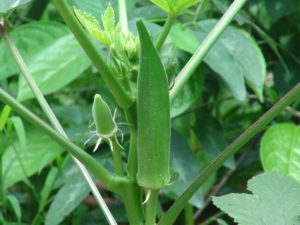
Introduction Of Ladies Finger :
Ladies finger or Okra, which is also known as ‘ Bhindi ‘, is one of the important vegetable crops of India. It is grown throughout the tropical and sub-tropical regions and also in the warmer parts of the temperate regions. Okra or Ladies Finger ( Abelmoschus esculentum (L.) Moench.) plant belongs to the family Malvaceae. The nutritional value of 100g of edible okra is characterized by 1.9 g protein, 0.2 g fat, 6.4 g carbohydrate, 0.7 g minerals, and 1.2 g fibers. Okra or Ladies Finger has good potential as a foreign exchanger crop and accounts for 65% of the export of fresh vegetables. It is cultivated in 0.35 M ha area with the production of 3.5 M mt and productivity of 9.6 mt/ha. The major Ladies Finger /Okra producing states in India are Uttar Pradesh, Bihar, Orissa, West Bengal, Andhra Pradesh, and Karnataka.
Improved varieties of Ladies Finger:
The crop varieties are Kamini, Pusa Mukhamali, Parbhani Kranti, Pusa Sawani, Vaishali, Vagmi, Padmini, etc. are commonly cultivated ladies finger varieties.
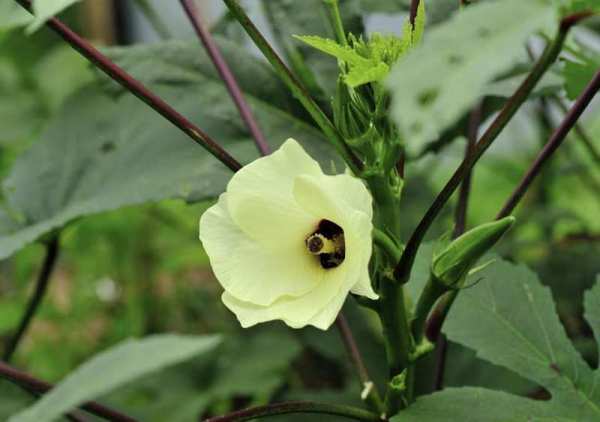
Local Names for Ladies Finger:
Ladies Finger, Okra (English), Bhindi (Hindi), Belendri (
Read: How to Make Argan Oil.
Climatic Condition required for growing Ladies Finger:
Ladies finger requires long warm growing season during its growing period. It gives good yield in warm humid condition. It grows best within a temperature range of 22-35°C. It can be successfully grown in the rainy season even in heavy rainfall area. Bhendi is highly susceptible to frost injury. Seeds fail to germinate when the temperature is below 20°C.
Suitable Soil for Ladies Finger Farming:
Ladies Finger or Bhendi can be grown well in all kinds of soil. .But sandy loam and clay-loam soils are best for its cultivation. The optimum pH range is between 6 and 6.8. Soils with high organic matter are preferred so that cartloads of FYM (Farmyard Manure) or compost should be incorporated during land preparation. Soil should have good internal drainage.
Land Preparation:
The land should be well prepared with 2-3 plowing. Well decomposed FYM (25 t/ha) is incorporated at the time of land preparation. Bhendi is sown on ridges or on flat soil. If soil is heavy, sowing should be done on ridges. Application of organic manure like neem cake and poultry manures improves the plant growth and the yield in this crop. It is possible to reduce the use of fertilizer by using neem cake and poultry manures or any other compost.
Soil sterilization:
The sterilization of the soil can be achieved by both physical and chemical means. Physical control measures include treatments with steam and solar energy. Chemical control methods include treatments with herbicides and fumigants. Soil sterilization can also be achieved by using transparent plastic mulch film, which is termed as soil solarization. During soil solarization, the incoming solar radiation penetrates the transparent plastic film and is absorbed in the soil. The absorbed radiation converts into heat energy, which raises the soil temperature and kills many soil-borne organisms including plant pathogens and pests.
Read: Cattle Fattening Methods.
Seed Rate and Sowing Time:
The seed rate of Ladies finger is about 3.5-5.5 kg seeds/ha during summer seasons and 8-10 kg seeds/ha for rainy season crop. The seed rate generally varies with germination percentage, spacing and season. Before sowing the seeds are soaked in a solution of Bavistin (0.2%) for 6 hours. The seeds are then dried in shade. The seeds are dibbled on either side of the furrows at a spacing of 60 x 30 cm in Kharif season and 30 x 30 cm in the summer season.
Best Season for Ladies Finger Farming:
The optimum time of seed sowing varies greatly depending upon climate, varieties and their temperature requirement for growth. Normally the crop is sown between January-March and June-August. The exact month of sowing depends on the region.
The spacing of Ladies Finger Plants:
Ridges & furrow type of layout is used. The hybrid varieties are planted at a spacing of 75 x 30 cm or 60 x 45 cm. A pre-soaking irrigation 3-4 days before sowing is beneficial. The seeds germinate in about 4-5 days.
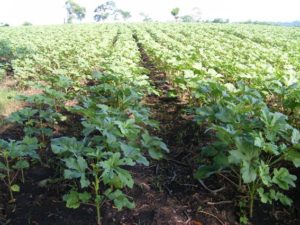
Drip system requirement for Irrigation:
Area: 1 ha, planting geometry: 60cm x 30cm. Variable Items: 75 mm F PVC/HDPE pipe-54 m, 75 mm F PVC/HDPE pipe-102 m, 12mm F LDPE Lateral-8400 m, Online dripper (2 l/h)-13,888 Nos., Control valve- 2 Nos., Flush valve- 2 Nos., Tees/bends-1 No., Accessories. Fixed Items: Screen filter (15m 3 / h) -1 No., Bypass assembly: 1 No., Fertilizer applicator –1 No., Accessories.
Irrigation/Water supply:
The Bhendi crop requires adequate moisture in the soil during summer months for faster growth. Drip irrigation is most suitable to the Ladies finger crop as it provides uniform moisture throughout the season. The daily water requirement of Ladies finger crop is 2.4 l/day/4 plants during the early growth stage and 7.6 l/day/4 plants during the peak growth stage. The irrigation system should be operated daily for 75 minutes during the initial growth stage and for 228 minutes during peak growth of the crop with an emitter capacity of 2 lph. Water supply on each day or on alternate days with On-line type of drippers is preferred. For advantages of Drip Irrigation System Read Here.
Application of manures and fertilizers in Ladies Finger Farming:
In order to maximize the yield about 30 t of FYM (Field Yard Manure), 350 kg Superphosphate, 125 kg Murate of Potash and 300 kg Ammonium sulfate should be applied in the rows before sowing for one hectare of land. Nitrogen should be applied through fertigation in three split doses.
Weed control in Ladies Finger Farming:
As Bhendi is harvested over a long period, weed control happens to be an important cultural operation. Weeding, thinning and earthling up is the important intercultural operations of bhendi. Earthing up in the rows should be done in rainy season crop. Application of herbicides for controlling weeds in bhendi is found effective. Basalin (Fluchoralin 48 percent) @ 1-2 liter per hectare and soil application of Tok-E-25 @ 5 liters per hectare effectively controlled the weeds. Shallow-rooted inter-row cultivation and hand weeding may be used to minimize weeds in the inter-row zone. Black plastic mulch may be used to suppress weed growth. The black plastic mulch also keeps the soil warm and encourages plant growth.
Pests and Diseases in Ladies Finger Farming :
The control measures for insects, pests, and disease depend upon type and intensity of the problems. The control measures for the main pests and diseases in Ladies Finger Farming are stated below.
Flea beetles are the major insect for Bhendi/Okra. This can be controlled with row covers or applications of Rotenone or Pyrethrin. Bhendi is susceptible to diseases such as Verticillium, Fusarium and several other fungal diseases in the wet season. These diseases can be controlled by proper crop rotation and good garden sanitation practices in Ladies Finger (okra) farming.
Read: Aloe Vera Juice Extraction Process.
Harvesting of Ladies Finger or Okra or Bhendi :
Flowering begins from 35 to 40 days after sowing. The crop is harvested in 55 to 65 days after planting when pods are 2 to 3 inches long. At this stage, the pods are still tender. Larger okra pods will tend to be tough and fibrous. Round-podded okra varieties remain tender at larger pod sizes and are good to use for slicing and freezing. Since Okra grows very fast, it should be harvested every two days. The pods should not be allowed to mature on the plant because this will inhibit more pods from developing and reduce the productivity of the plant. Handling of okra should be done carefully because the pods bruise easily.
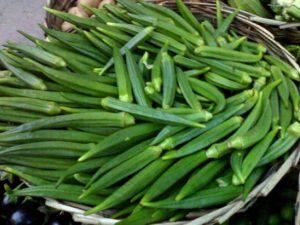
The yield of Ladies Finger crop:
The yield of Bhendi /Okra/Ladies Finger varies from 5 – 7 ton/ha in summer to 8 – 10 tonnes/ha in the rainy season.
Post Harvesting and Storage Tasks of Okra:
Ladies Finger has a short storage life. A fresh good pod can be stored for 7-10 days at 7-10°C temperature and 90-95% relative humidity. At temperatures below 7°C Okra is subjected to chilling injury, which results in surface discoloration, pitting and decay.
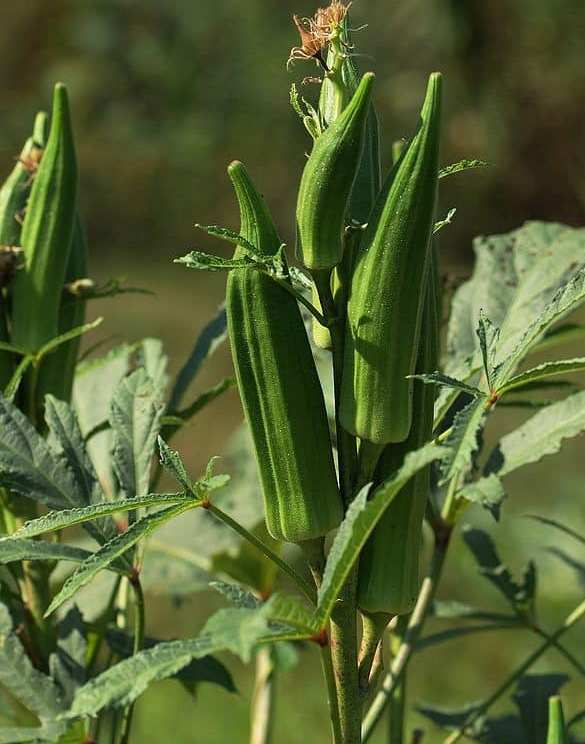
Marketing of Ladies Finger:
Harvested Okra or Bhendi can be transported to local vegetable markets easily.
Bottom Line:
As vegetable prices are increasing daily and as this crop requires low in investment, this can be your jackpot commercial Ladies Finger Farming, if you have your own land with good management practices.
Read: How to Grow Broccoli in Your Home Garden.
I have sown near about 1000 seedlings of lady finger and they are now 30 days old but growth is not equal. What shall I do?
Probably it is because of soil type or fertility. Nitrogen is the main fertilizer required for plant growth. If you are planning for commercial cultivation of okra (ladies finger). It’s better to go for soil test to find out the soil pH and fertility.
Read more about Ladies Finger (okra) growing here: https://www.agrifarming.in/ladies-finger-farming/
Make sure you water, then in preparation along with good compost to provide nutrients like ‘N’, ‘P’, and ‘K’.
Would like to farm ladies finger in 5 acres. Kindly guide me suitable seed source.
Thank you. Just planted 10 on my terrace 🙂
Sir can i harvest by tunnel farming in the month of November so that we received ready crops in March or April
Hi can Okra be grown in pots?
Why not? you can easily grow Okra in pots and big containers, even on raised beds.
If i grow in one acre and get good yield, How much i can earn in all total 3 months of harvesting ?? please reply all
Hii , your advice regarding Okra Farming is very useful and we gets very important tips from it but could you plz provide some details about okra farming for export quality and seeds details for the same.
Where do I can get good quality hybrid okra seeds, what is the price per kilo